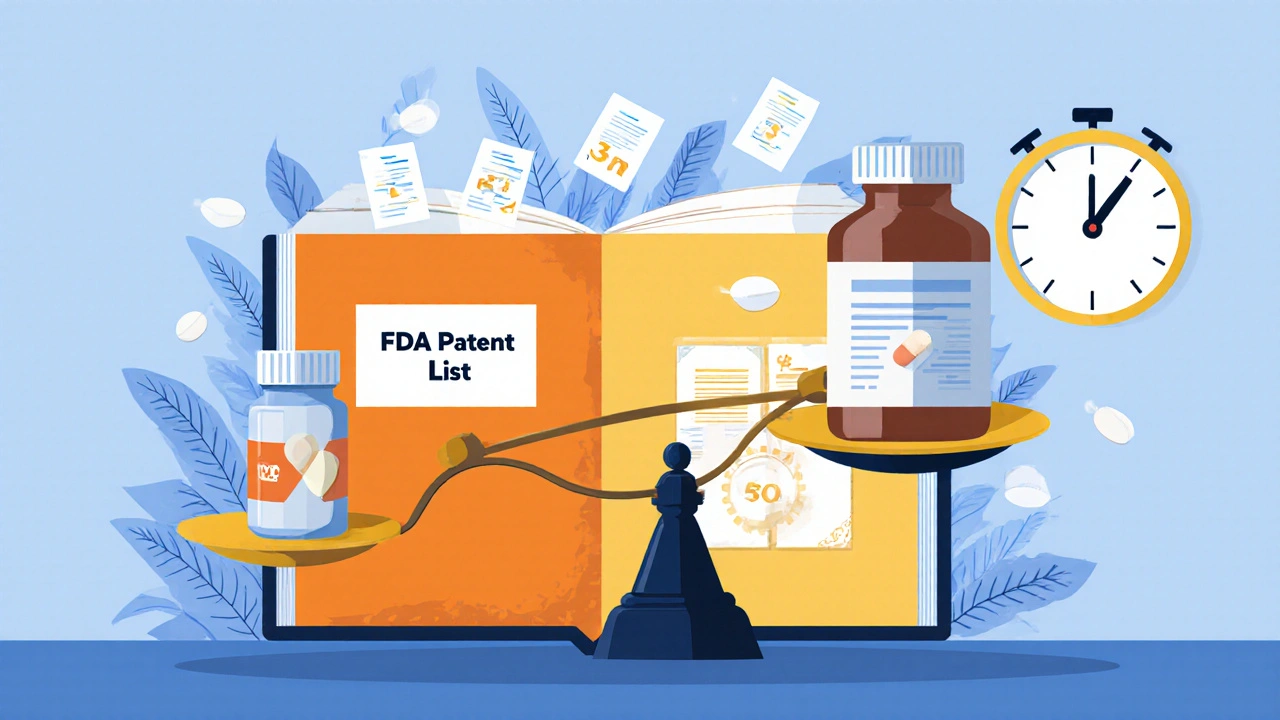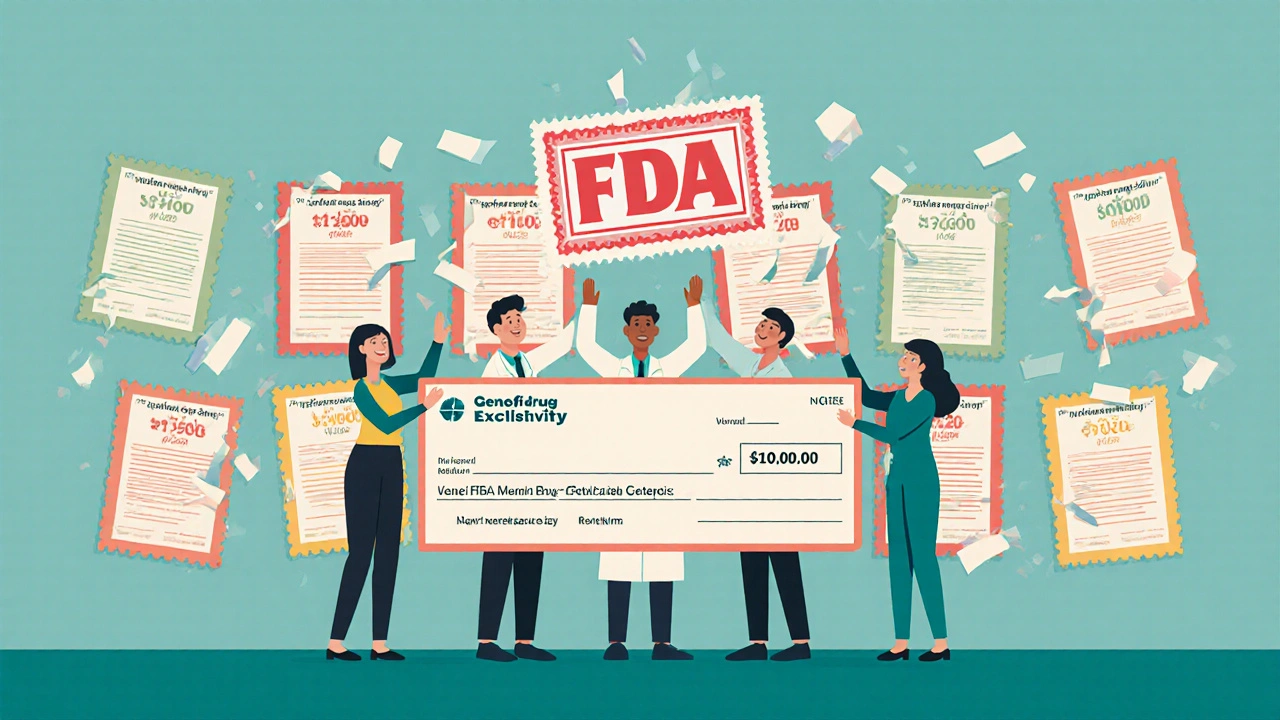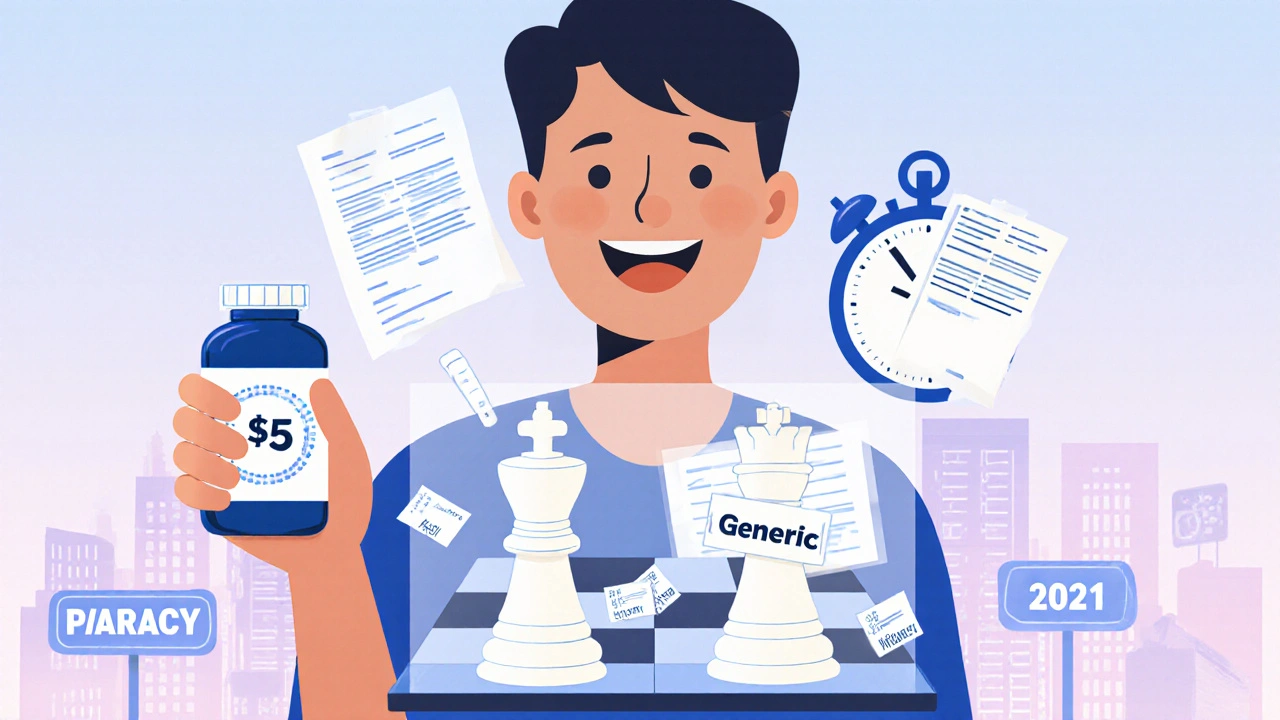How Paragraph IV Patent Challenges Speed Up Generic Drug Entry
 Nov, 25 2025
Nov, 25 2025
When a brand-name drug’s patent is about to expire, the race to bring out a cheaper generic version begins - but it’s not as simple as just copying the pill. Behind the scenes, a legal process called Paragraph IV certification determines whether a generic drug can hit the market early, even before the patent runs out. This isn’t a loophole. It’s a carefully designed part of U.S. drug law that’s saved consumers over $1.6 trillion in the last decade. But it’s also a high-stakes game of legal chess, where billion-dollar profits hang on the wording of a single patent claim.
What Is Paragraph IV and Why Does It Matter?
Paragraph IV is a provision in the 1984 Hatch-Waxman Act. It lets generic drug makers file an Abbreviated New Drug Application (ANDA) with the FDA while simultaneously challenging patents listed in the FDA’s Orange Book - the official list of approved drugs and their patents. Instead of waiting for the patent to expire, a generic company can say: “This patent is invalid, unenforceable, or we don’t infringe it.” That’s Paragraph IV. This isn’t just a formality. Filing a Paragraph IV certification is legally treated as an act of patent infringement, even though no drug has been sold yet. That triggers a clock. The brand-name company has 45 days to sue. If they do, the FDA can’t approve the generic for up to 30 months - unless the court rules in the generic company’s favor earlier. The real prize? The first company to file a successful Paragraph IV gets 180 days of exclusive rights to sell the generic version. No other generic can enter during that time. That’s why companies like Teva, Mylan, and Barr (now part of Teva) spend millions preparing these filings. One win can mean hundreds of millions in sales before competitors even get started.How the Process Actually Works
It starts with research. Generic manufacturers don’t just pick any drug. They dig into the Orange Book and look for patents that look weak - like ones that cover minor formulation changes, methods of use, or packaging. These are often called “secondary patents.” The original compound patent is harder to challenge. But if a brand company has piled on five or six patents just to delay competition, that’s where the fight begins. Once they pick a target, the generic company files its ANDA with the FDA and sends a detailed legal notice to the brand company. This notice isn’t vague. It has to lay out exactly why the patent is invalid or not infringed. Did the patent claim something that was already published in a 1990s journal? Is the drug’s structure different enough that it doesn’t fall under the patent’s wording? The legal team needs to prove it with scientific data and prior art. If the brand company sues within 45 days, the 30-month clock starts. During that time, the FDA sits on the application. The case goes to federal court. The most critical moment? The Markman hearing. That’s where the judge interprets the patent’s claims - the legal language that defines what’s protected. If the judge says the patent only covers a specific salt form of the drug, but the generic uses a different salt, the generic wins. If the generic company wins, the FDA approves the drug immediately. If the brand wins, the generic waits until the patent expires. But even if the generic loses, the 180-day exclusivity period is forfeited. That’s why many companies settle - sometimes with a payment from the brand to delay entry. Those “pay-for-delay” deals were common until the Supreme Court ruled them illegal in 2013.Why Most Paragraph IV Cases End in Settlement
About 76% of Paragraph IV cases never go to trial. Why? Because both sides know how expensive it is. A full patent battle can cost $7.8 million for the generic company and even more for the brand. The average case lasts almost 29 months - nearly the full 30-month stay. Settlements often happen when the brand company realizes its patent is shaky. But sometimes, the brand pays the generic to stay off the market - a deal that looks suspiciously like a bribe. The FTC has cracked down on these, but they still happen. In one case, a brand paid a generic $500 million to delay entry for six months. The FTC sued. The court said no - it’s anti-competitive. The real winners? Consumers. When a generic enters after a successful Paragraph IV challenge, prices drop by an average of 79% within six months. For a drug like Lipitor, which cost $150 a month before generics, the price fell to under $10. That’s not just savings - it’s access.
What Makes a Paragraph IV Challenge Win or Lose
Success isn’t about having the biggest legal team. It’s about the patent itself. The most common winning arguments:- Obviousness: The patent claims something that was already known or easily figured out by someone skilled in the field. Teva’s challenge to Pfizer’s Lyrica patent succeeded because the court found the method of use was obvious based on prior studies.
- Invalid prior art: A journal article, old patent, or clinical trial report proves the invention wasn’t new. Many secondary patents fail here.
- Non-infringement: The generic drug doesn’t match the patent’s exact wording. Maybe it uses a different salt, crystal form, or dosage form.
The Cost of Playing the Game
Filing a Paragraph IV isn’t cheap. Companies spend an average of $2.3 million just on pre-filing analysis - legal research, scientific testing, patent mapping. Then there’s manufacturing. If you think you’ll win, you have to be ready to produce millions of pills before the court even rules. That means $15-25 million in upfront investment. And the risk? If you lose, you could owe damages. Mylan once lost a case against Novartis over Gleevec and was hit with $1.1 billion in penalties for willful infringement. That’s why many companies only file when they’re 80% sure they’ll win.
How This Compares to Other Countries
The U.S. is unique. In Europe, there’s no Paragraph IV system. Generic companies have to wait until every patent expires. That means a drug like Humira stayed brand-only for over a decade longer in the EU than in the U.S. The FDA’s system, flaws and all, gets generics to market faster. China and India have their own systems, but they’re less predictable. The U.S. system, despite its complexity, is the most transparent and legally grounded. That’s why most global generic manufacturers focus their Paragraph IV efforts here.What’s Changing Now?
The game is evolving. Brand companies are filing more patents per drug - from an average of 1.2 in 1984 to 4.8 in 2020. Many are method-of-use patents: “This drug treats depression” or “Take it with food.” These are harder to challenge because they’re not about the drug itself - they’re about how it’s used. New laws are trying to level the field. The 2023 CREATES Act forces brand companies to sell samples to generics for testing - something they used to refuse to delay approval. The FDA’s 2022 rule also requires generic applicants to challenge all listed patents, not just the obvious ones. And now, the Inflation Reduction Act lets Medicare negotiate drug prices. That changes the math for brand companies. If they know the government will cap prices later, they might be less willing to pay big settlements to delay generics.What This Means for You
Whether you’re a patient, a pharmacist, or just someone paying for prescriptions, Paragraph IV is why your generic pills cost so little. Without it, many drugs would still be priced at brand levels. The system isn’t perfect - it’s expensive, slow, and sometimes manipulated. But it works. In 2021 alone, Paragraph IV challenges opened the door for 287 generic drugs, saving the U.S. system nearly $100 billion. The next time you pick up a $5 generic prescription, remember: someone fought a patent lawsuit to make that possible. And if you ever wonder why a new drug takes years to go generic - now you know why.What is Paragraph IV certification?
Paragraph IV certification is a legal statement made by a generic drug manufacturer when filing an Abbreviated New Drug Application (ANDA). It claims that one or more patents listed for the brand-name drug in the FDA’s Orange Book are invalid, unenforceable, or will not be infringed by the generic product. This triggers a patent litigation process under the Hatch-Waxman Act.
How does Paragraph IV lead to lower drug prices?
Paragraph IV allows generic drugs to enter the market before a brand patent expires, if the generic successfully challenges the patent in court. Once the first generic enters, it gets 180 days of exclusivity. During that time, it typically captures 70-80% of the market. This competition drives prices down by an average of 79% within six months of entry.
Why do brand companies sue after a Paragraph IV filing?
When a generic company files a Paragraph IV certification, it’s legally treated as an act of patent infringement. The brand company has 45 days to sue to protect its patent rights. If they do, the FDA is automatically blocked from approving the generic for up to 30 months - giving the brand time to defend its market.
What is the 180-day exclusivity period?
The first generic company to successfully file a Paragraph IV certification and win its patent challenge gets 180 days of exclusive rights to sell that generic version. No other generic can enter during that time. This incentive drives competition and rewards the first mover, even if the patent challenge is risky or expensive.
Can a generic company lose a Paragraph IV case?
Yes. If the court rules the patent is valid and infringed, the generic cannot enter the market until the patent expires. The company also loses its 180-day exclusivity right. In rare cases, if the court finds the challenge was willful or reckless, the generic may be ordered to pay millions in damages - as happened in the Mylan vs. Novartis case.
Why are there so many patents listed for one drug in the Orange Book?
Brand companies often file multiple patents - for the drug’s chemical structure, formulation, method of use, packaging, or manufacturing process - to create a “patent thicket.” This makes it harder for generics to find a weak patent to challenge. In 2020, the average drug had 4.8 Orange Book patents, up from just 1.2 in 1984.

Dan Rua
November 25, 2025 AT 23:40Wow, this is wild. I had no idea a single legal filing could drop a $150 pill to $10. 🤯 My grandma takes Lipitor generics every day - now I know why she’s not broke. Thanks for breaking this down so clearly.
Mqondisi Gumede
November 26, 2025 AT 01:33USA thinks it’s so smart with its patent games but in reality it’s just corporate theater. In South Africa we wait years for generics because we can’t afford the lawyers. You call this innovation? It’s a rigged casino where Big Pharma holds all the chips. The 180-day monopoly? That’s not competition - that’s legalized greed dressed up as law.
Ginger Henderson
November 26, 2025 AT 19:16Okay but like… why does everyone act like this is some noble system? It’s just a game of who can file the most confusing legal paperwork. And don’t even get me started on those pay-for-delay deals. Still happens. Everyone knows it. But no one does anything. 🤷♀️
Stephanie Deschenes
November 28, 2025 AT 08:41As someone who works in pharma compliance, I can confirm this is accurate - and even more complex than described. The Markman hearing is the real make-or-break moment. Most attorneys don’t realize how much hinges on word choice in patent claims. A single comma can change everything. And yes, the $2.3M pre-filing cost? That’s conservative. Some firms spend double just on prior art searches. The system’s broken, but it’s the only one we’ve got that actually works.
Amanda Meyer
November 29, 2025 AT 12:51The structural imbalance here is staggering. Generic manufacturers risk billions on a legal gamble while brand companies exploit procedural delays with patent thickets. The Hatch-Waxman Act was meant to balance innovation and access - but today, it’s a weaponized mechanism favoring litigation over patient care. The 2023 CREATES Act is a step forward, but without capping litigation costs and banning secondary patent stacking, we’re just rearranging deck chairs on the Titanic.
Jesús Vásquez pino
November 30, 2025 AT 08:23Stop pretending this is about patients. This is about who controls the money. The FDA’s 30-month stay? That’s a corporate timeout. The 180-day exclusivity? That’s a monopoly reward for playing hardball. And don’t even mention the lawyers - they’re the real winners. Every single Paragraph IV case is a profit center for Big Law. The drug prices? Afterthought.
hannah mitchell
December 1, 2025 AT 03:43I just read this while waiting for my $4 generic blood pressure med. Feels weird to think someone risked millions so I could afford it. Thanks, anonymous legal team.
vikas kumar
December 2, 2025 AT 19:51Interesting read. In India, we don’t have Paragraph IV, but we have something called compulsory licensing - government steps in when drugs are too expensive. It’s messy, but it works. Maybe the U.S. should borrow that idea instead of letting corporations play chess with people’s lives. Just saying.